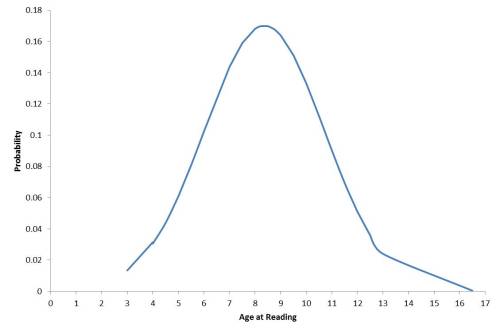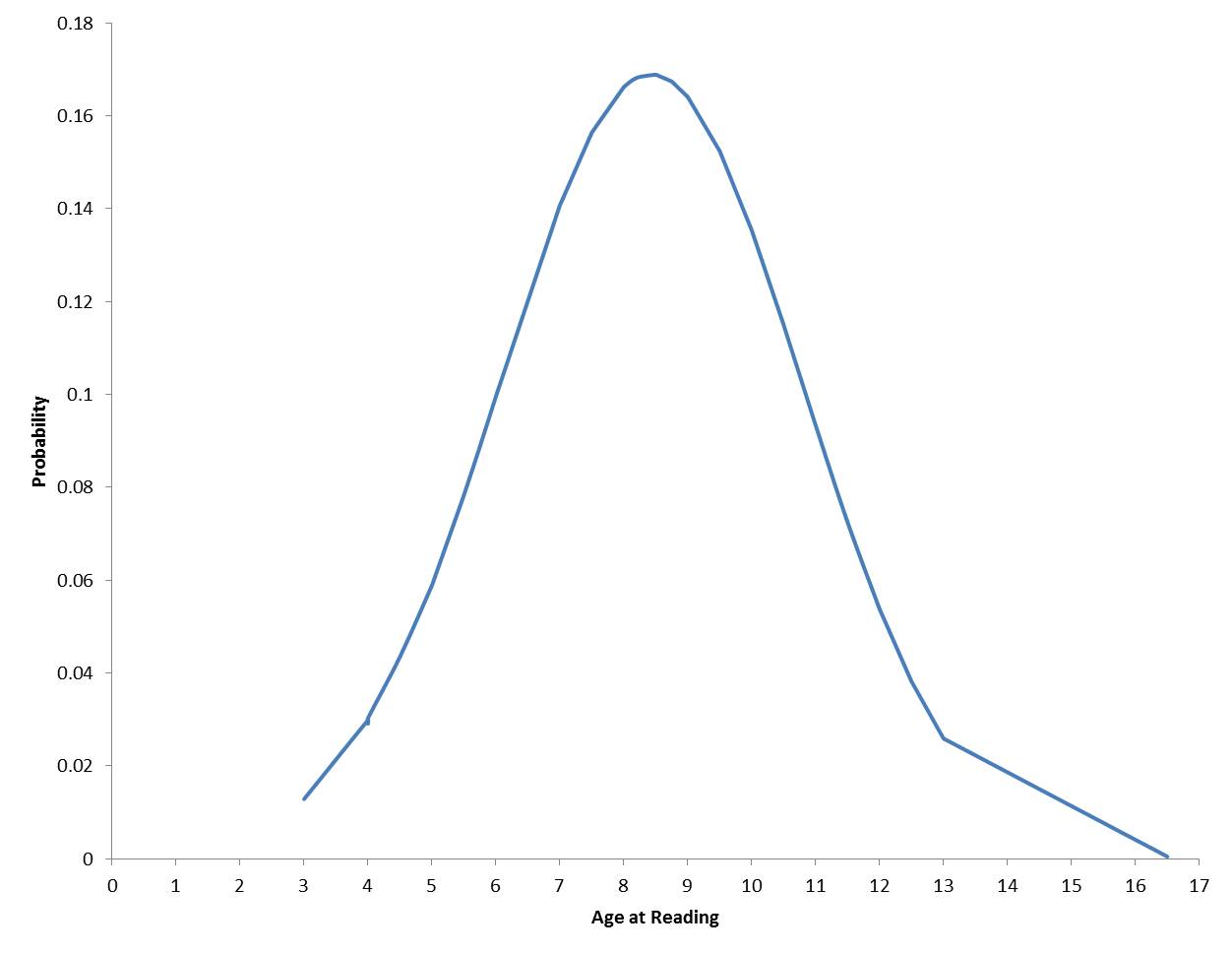Reading age in unschooled kids
Jo Isaac, July 2016
Second day update, August... :
Reading age in unschooled children (from a survey on Always Learning Yahoo Group – currently n=85 children) spanned from 3 years, to 16.5 years. Reading was defined as ‘reading fluently -able to read anything they wanted to easily.’
As far as could be determined – all children included were always unschooled (Kinder/pre-school wasn’t counted, as it was unlikely to have hampered the reading process too much, but no children who had gone to school from first grade onward were included).
The mean age of reading is currently 8.4 years, the mode is 8, and median is 8.5 years.
32% of children were reading before the age of 8. Nearly 50% of children learnt to read between the ages of 8 and 10. About 17% learnt to read after the age of 10.

Day One notes and graph (which I'll probably delete or archive, but for now it's still here):
July 6
Data is still coming in, and so it may change – at the moment the data follows a normal distribution –
Reading age in unschooled children (from a survey on Always Learning Yahoo Group – currently n=60 children) spanned from 3 years, to 16.5 years. Reading was defined as ‘reading fluently -able to read anything they wanted to easily.’
As far as could be determined – all children included were always unschooled (Kinder/pre-school wasn’t counted, as it was unlikely to have hampered the reading process too much, but no children who had gone to school from first grade onward were included).
The mean age of reading is currently 8.4 years, the mode and median are 8.5 years.

graph as of 10 August 2016, Australia
Thanks to everyone who sent me data! I have 51 data points, and (a bit surprisingly to me, to be honest!) so far the data is a perfect normal distribution/bell curve, with a median and a mode of 8.5 years, a mean of 8.02 years. Graph below (age on X axis)
Jo
What are you considering “can read”?
During the discussion at Always Learning, I wrote:Jo, what are you considering “can read”?
Do you want to clarify so you sort “beginning to decode” from fluent reading?
It seems lots of unschooled kids do go from confusion to fluency pretty quickly!
Kids at school might too, but it’s buried under all that confusing data about reading readiness and parcipation and phonics and writing and… it’s hard for it to show in a group of +/- twenty kids. But one kid home picking something up and reading it is glaring and exciting.
Sandra
Jo responded:To clarify - I think 'able to read and understand most things' qualifies? So - if they needed to read instructions to get to another level in a video game, or read a menu in a cafe, etc? Obviously we are all learning new words all the time. And not every kid wants to read a novel.
Kai went from awkwardly sounding out to fluency in about 6 months. So I am counting him being fluent 'proper reading' at the end of that 6 months, not when he actually started sounding out and beginning to decode.
I hope that clarifies - it is a bit hard to nail down though!
Alex Polikowsky added something many parents don't know:And in the US kids are not expected to read " unassisted" until they are third grade or around 8 years old.
So those kids in school would be learning to read anyway but without the baggage and pressure!
They would own their learning . They would not feel they are not smart enough if they are still not reading at 10 or 16
Alex P
There is a newer version here: Reading age in Unschooled Kids 2018 update
Jo Isaac

The Nature of "Real Reading"

More on unschoolers and reading



